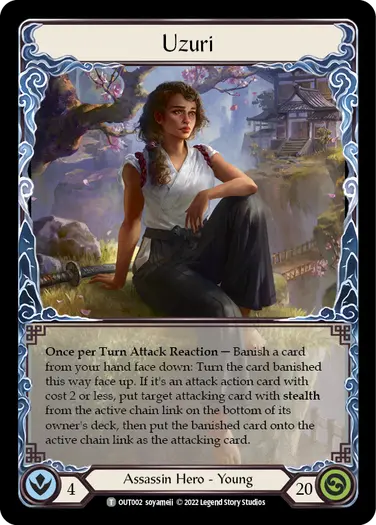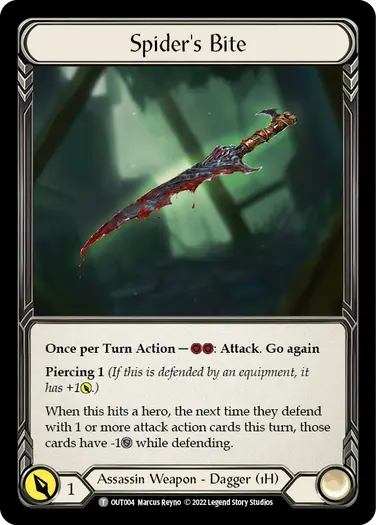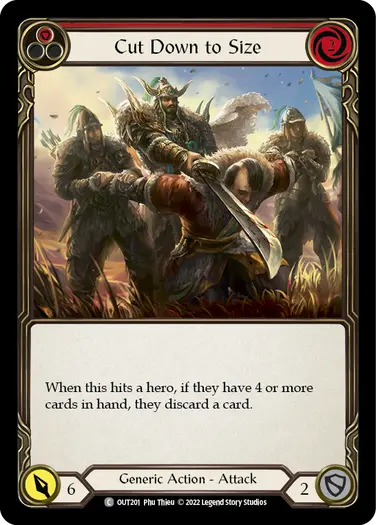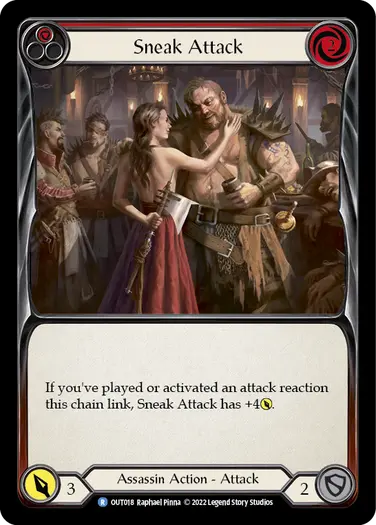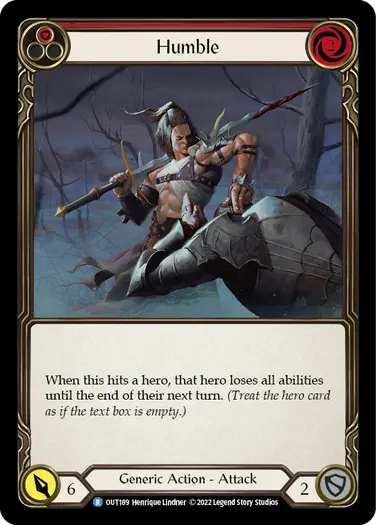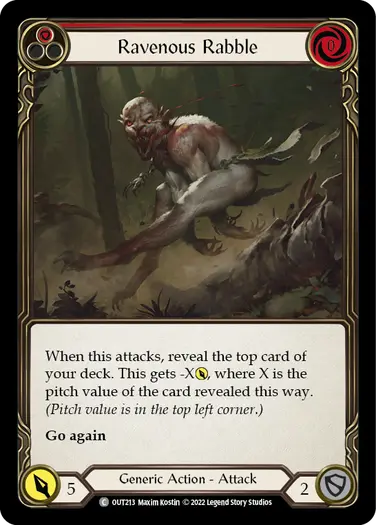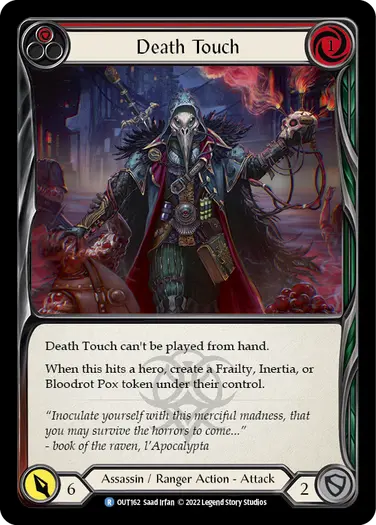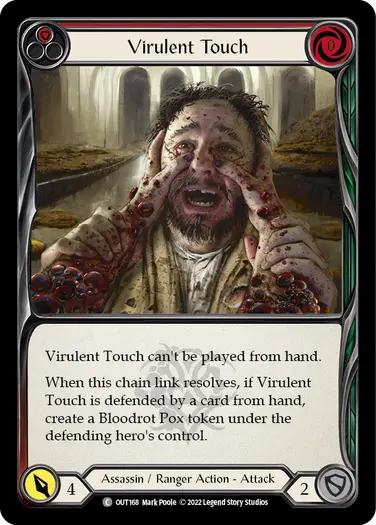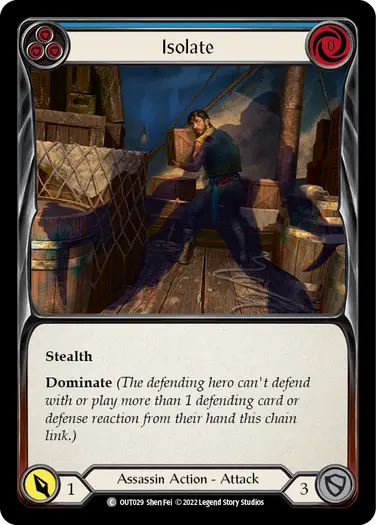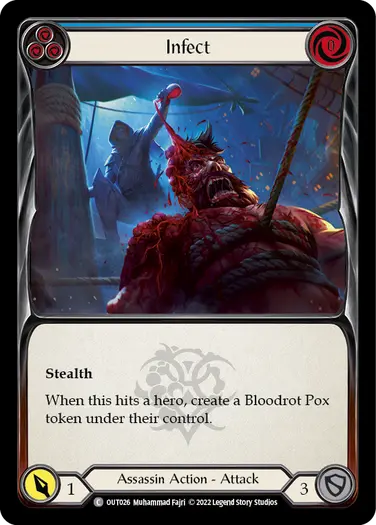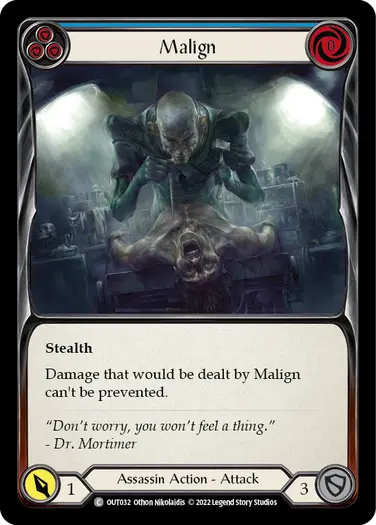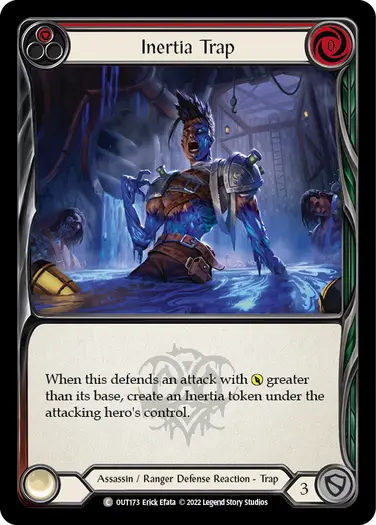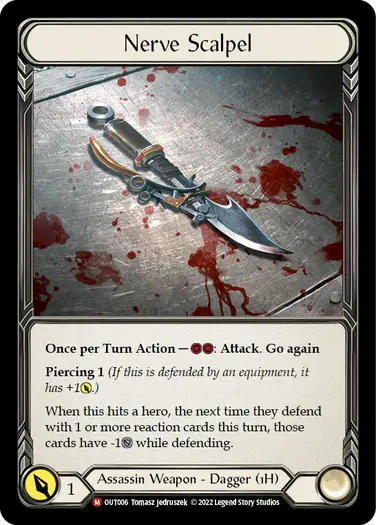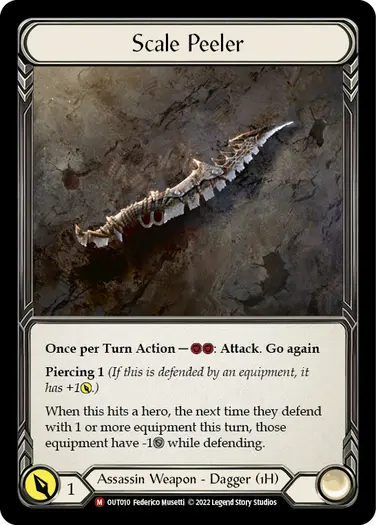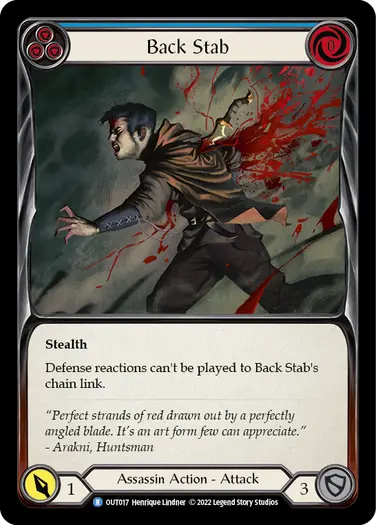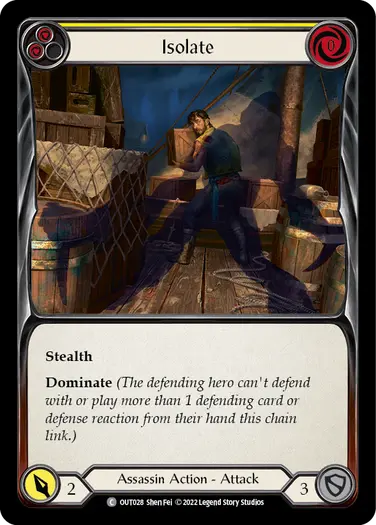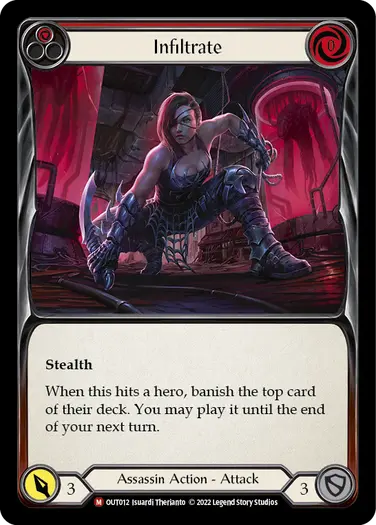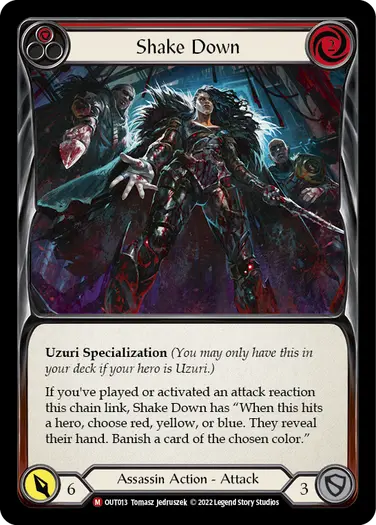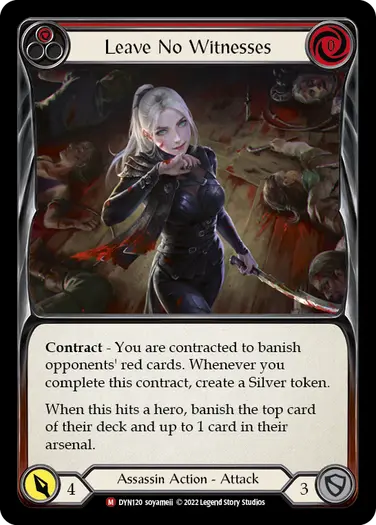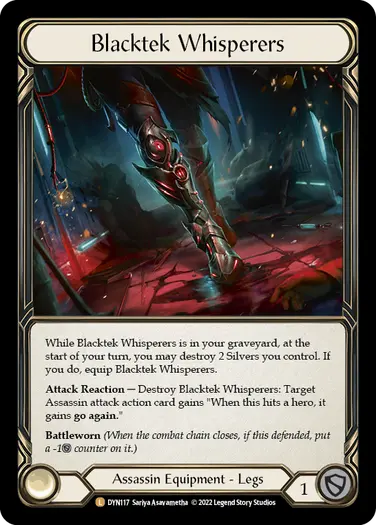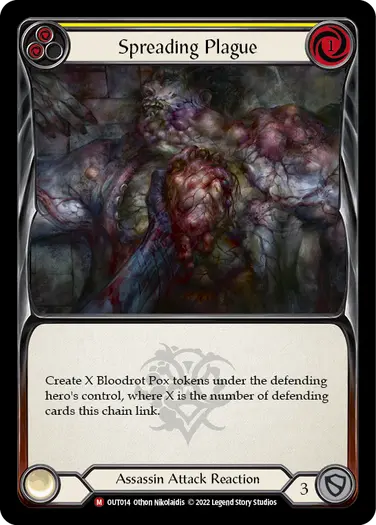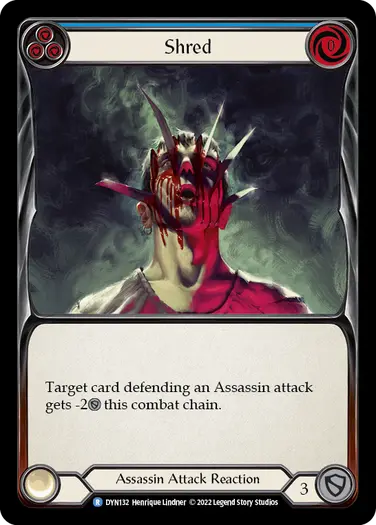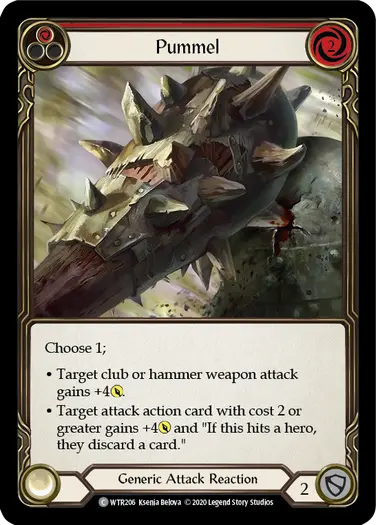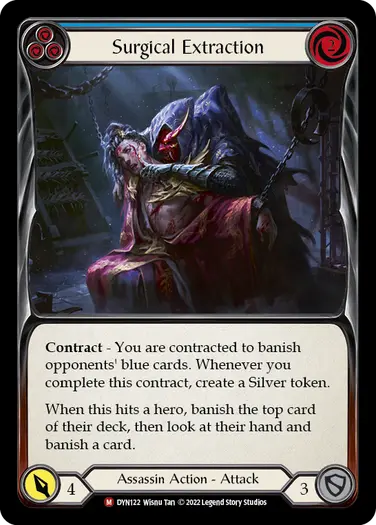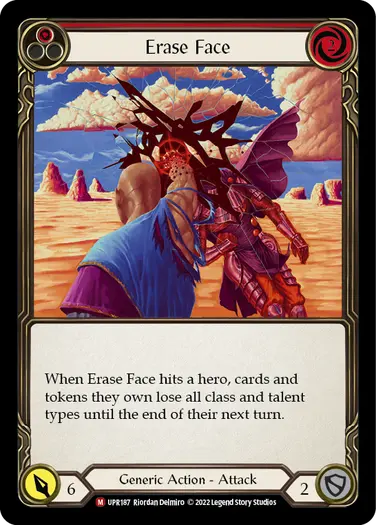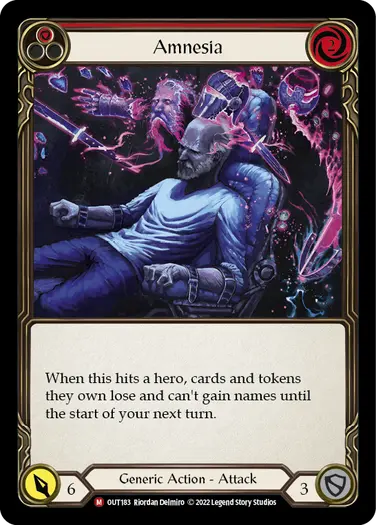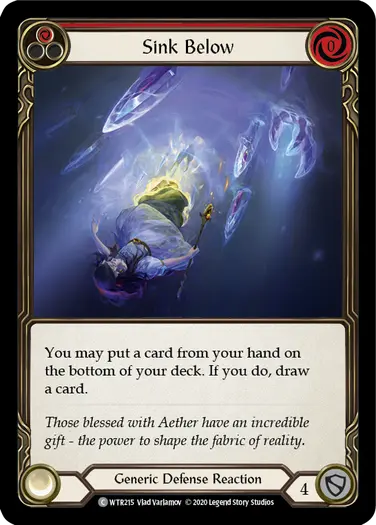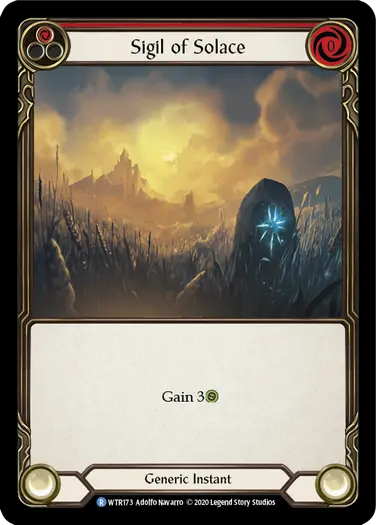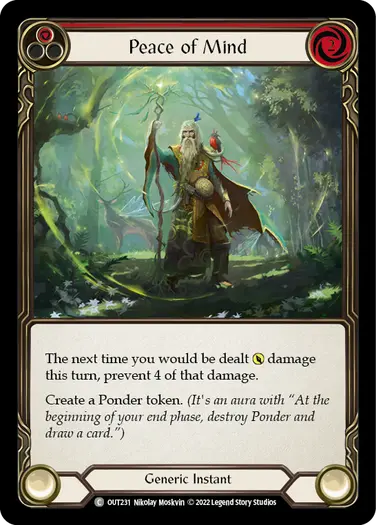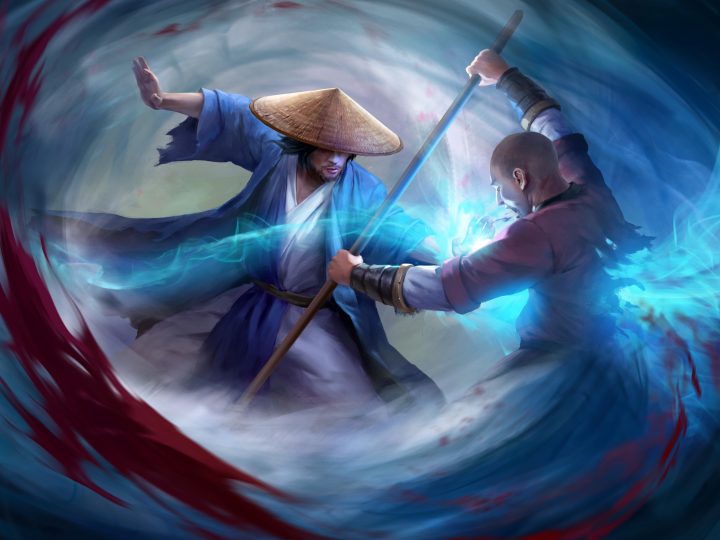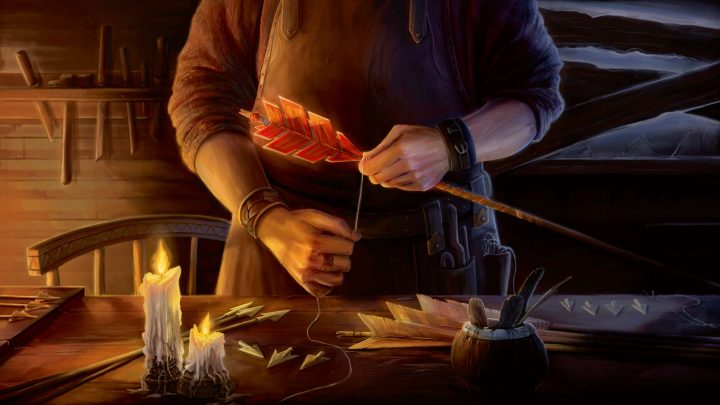Rohan Khanna is a developer at Legend Story Studios, and brings us the third chapter of a series of deep dives into the heroes in Outsiders, focusing on both limited and constructed play. Today we learn how to outsmart our foes with Uzuri, Switchblade.
Uzuri wiped the blood from her face and grinned at the common gang thug standing before her in the alleyway.
The poor fool had his fists raised, ready to deliver another punch, but her gleeful reaction to the first blow caused him to falter, eyes darting wildly.
“You don’t know who I am, do you?” she spoke calmly, tilting her head to loosen the joints in her neck.
Realizing he might have bitten off more than he could chew, the thug took a step back, sweat pouring down his mucky brow like sewage from a wastewater pipe. Uzuri reciprocated by closing the space between them, her eyes twinkling with cruel delight.
The thug panicked and swung at her with a flimsy left hook. Uzuri ducked out of reach and grabbed hold of his leather collar, pulling him close and slamming her forehead into his face. He yelped, trying to stem the blood torrenting from his nose, then readied himself to hit back.
Uzuri just smirked and gestured downwards with her eyes. He glanced down, spotting the shiny dagger planted comfortably in his gut.
Before he could react she yanked the dagger sideways, opening up his belly and exposing its contents. The thug flopped to the ground like a wet rag.
“Novice…”
Uzuri stepped over the twitching body, shaking her head.
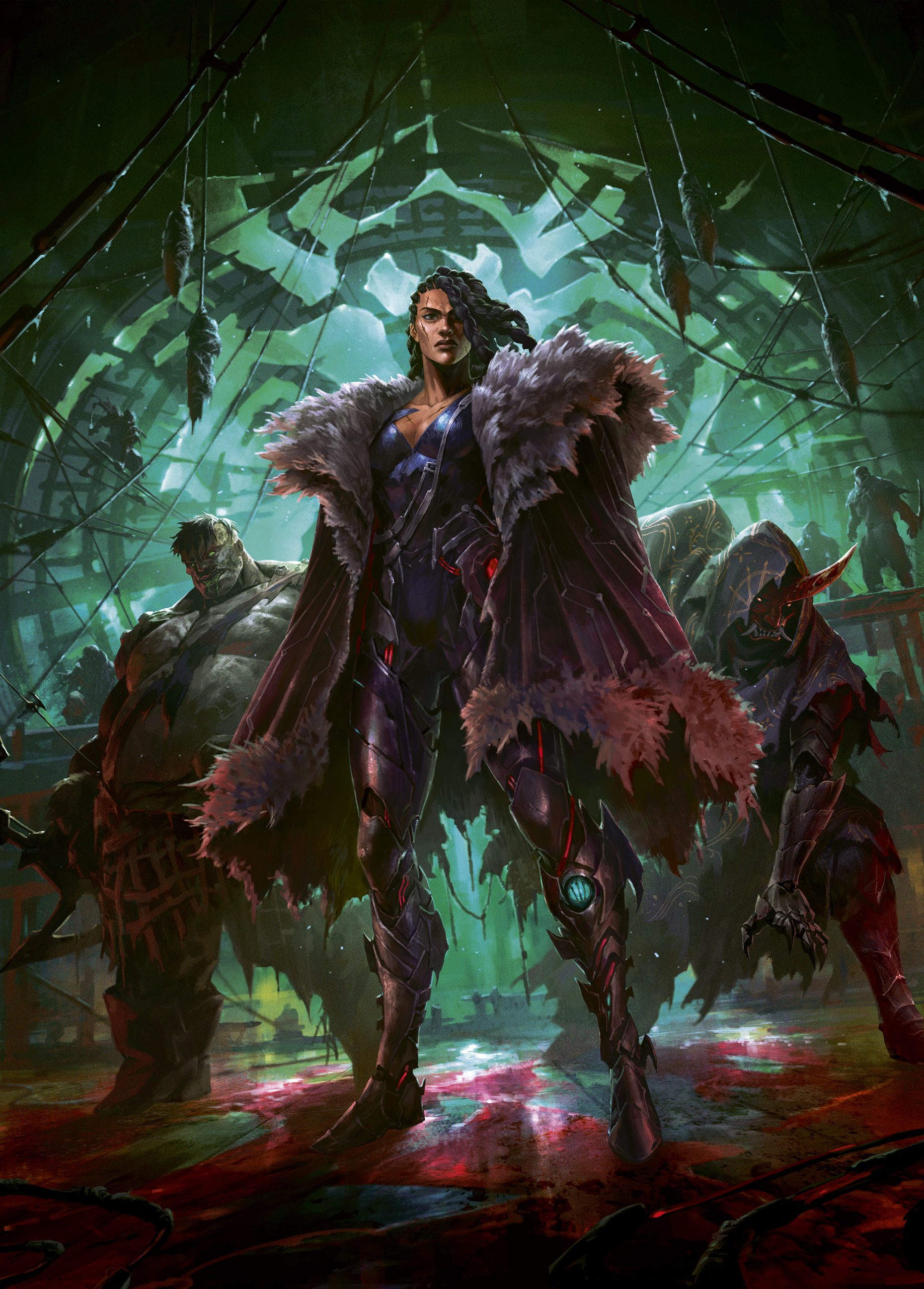
Draft
Looking to infiltrate your opponents ranks? Shake someone down for everything they have? Or perhaps lord over the reaction step and punish your opponents for their mistakes? Look no further, as today I’ll be showcasing the newest assassin on the block.
This hero has one of the most unique abilities in the game.
After our opponent has blocked we can put our attacking stealth card to the bottom of our deck, and replace it with an attack from hand (without paying its cost), making Uzuri very difficult to defend properly.
Our weapons make this ability even stronger, weakening the block value of our opponent’s attack action cards.
Drafting Uzuri allows us to stay open early by taking cards that are great for her, but can also fit nicely in any other deck if we get pushed into a different hero.
Aside from Sneak Attack, premium early picks for Uzuri mostly lie in the generic and hybrid card pool, where we can find high quality attacks that we can switch in.
With her ability we can bypass certain conditions for cards to be played, or negative effects that trigger on attack.
You might be thinking “wait, I need stealth attacks for this deck to function, why am I taking non-stealth attacks early while passing cards from the assassin pool?”
Unlike Arakni, who’s bread and butter is red stealth attacks and premium pumps, Uzuri is very happy just taking the blues and yellows.
Due to her ability, a blue stealth attack demands just as much respect as a red. This factor gives Uzuri so much versatility, as our resource cards double up as the engine.
Isolate is amazing, as dominate forces a one-card block, then we can switch in a big attack and push damage. It also goes to the bottom of your deck, coming back around in the endgame to push even more.
Without any built in go again, Uzuri leans towards strong 2-3 card hands. Most assassin cards defend for 3, so we can mitigate damage and trade favourably with our opponent.
Drafting a few traps can really help in this department, but there’s also another good reason to consider taking them. Defense reactions are the best tools to have against Uzuri, allowing our opponent to block efficiently in the reaction step. Removing traps and damage prevention cards from the draft pool can really bolster our strategy, even if we don’t end up playing all of them.
Constructed
Uzuri works well as a midrange hero that relies on disruption during the reaction step to keep your opponent off balance.
Since we can switch in any attacks with cost 2 or less, the options for deck building are vast.
However, there are some core cards you’ll need for the deck to function:
- A critical mass of stealth cards to activate Uzuri’s hero ability
- Attacks to switch in that provide damage, value, and/or disruption
- Cards that help us control the game
Firstly, let’s check out her weapons.
When it comes to blades, assassins are spoiled for choice. This isn’t as free as it looks though, as the daggers take up precious sideboard slots. I wouldn’t recommend turning up to a tournament with eight daggers and only six other cards in the sideboard, so each dagger has to be weighed up carefully against the meta.
Uzuri’s gameplan revolves around stealth cards, so we need to make sure we have lots in our deck. We can fill up our resource base with these stealth cards in blue and yellow as a starting point.
Back Stab and Isolate are standouts as they make blocking harder for the opponent, and our red stealth cards should have nice hit effects if we just want to play a one card hand.
A nasty play is Back Stab into Command and Conquer, giving our opponent no window to use defense reactions.
Uzuri doesn’t have a high damage cap like aggro decks, but she has access to some of the best disruption in the game.
We keep our cards close to our chest until the very last moment. Starting your turn with a dagger attack into a stealth attack, our opponents have no idea what’s coming, often leading to bad blocks and getting punished.
To make sure we can push this disruption through, we need to back our threats up with attack reactions.
Being an assassin, Uzuri has access to a smorgasbord of reactions, which can make it hard to pick which ones to use.
These cards are good in most scenarios, letting us extend turns, force through detrimental on-hits, or punish overblocking.
There are several nifty plays we can do with reactions, like activating Blacktek Whisperers to turn on Shake Down’s hit trigger, or using Shred on a card defending your stealth attack before switching in a new attack and retaining the Shred effect.
I can’t talk about attack reactions without mentioning pummel.
Going down this road moves us towards playing more 2-cost attacks, while also giving extra reach to cards like Command and Conquer and Shake Down.
Hidden information is a huge part of Uzuri’s gameplay. The fact that we switch our attack in during the reaction phase after our opponent has declared blocks can be leveraged in many different ways.
Nothing feels better than attacking with a single stealth card, getting a double block from the opponent, then playing sigil or arsenaling a defense reaction and passing. Forcing an extra card due to the perceived threat of an Uzuri activation, then bolstering your life or defenses is just great value.
I hope you enjoy playing Uzuri as much as I do!
